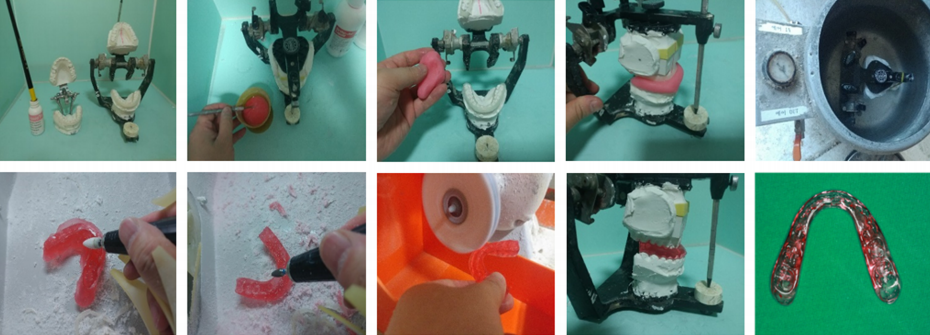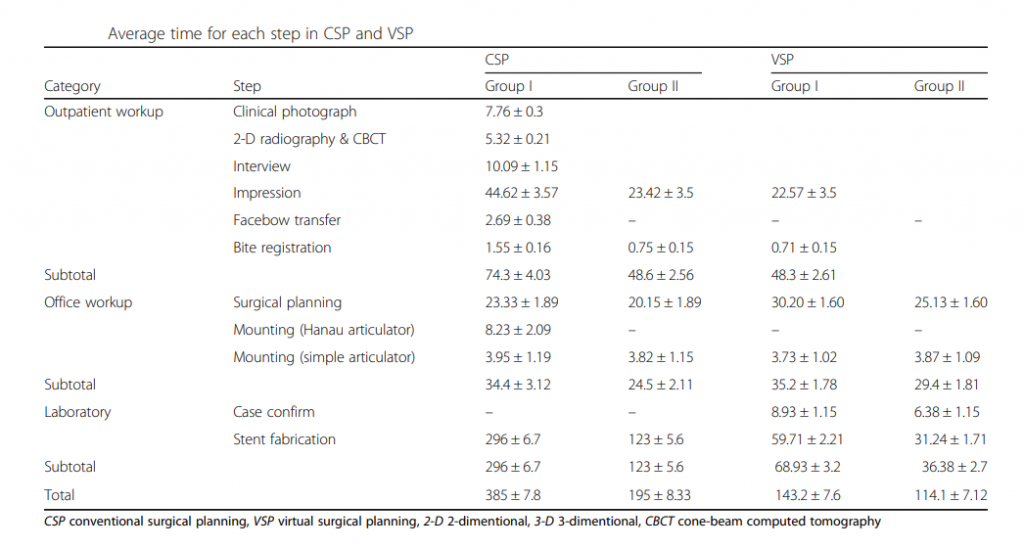In ‘Comparison of time and cost between conventional surgical planning and virtual surgical planning in orthognathic surgery in Korea,’ authors Si-Yeon Park, Dae-Seok Hwang, Jae-Min Song, and Uk-Kuy Kim explore the topics of 3D printing in the medical realm, but in regards to a very specific type of procedure. The study involved patients undergoing surgery of the jaw at the Pusan National University Dental Hospital from December 2017 to August 2018.
Intense planning is required for orthognathic surgery, with ‘accurate and delicate’ patient data analysis required. Traditional analysis is detailed and arduous, while virtual surgical planning (VSP) and 3D analysis involve:
- Analyzing skeletal deformities
- Performing virtual surgery
- Fabricating a surgical stent
Patients involved in the study had received Le Fort I osteotomy and bilateral sagittal split osteotomy (LFI+BSSO) or only bilateral sagittal split osteotomy (BSSO). Preoperative steps were taken at the hospital, with surgical planning performed through conventional and virtual methods. Patients were divided into two groups:
- Group One – patients who underwent LFI and BSSO regardless of genioplasty
- Group Two – patients who had undergone BSSO regardless of genioplasty
All patients underwent radiography. For Group One, the patients required maxillary and mandibular impression, with facebow transfer required for conventional analysis. For Group Two, the patients needed one pair of maxillary and mandibular impressions. The study included 47 patients, all of whom underwent surgery performed by one surgeon.
While conventional planning may often be responsible for errors, along with diminishing accuracy, virtual planning offers all the opposite benefits, preventing mistakes and improving precision and accuracy. Many surgeons are turning to VSP because of the many advantages outweighing more traditional techniques.
Along with being more accurate, VSP is also much faster; however, affordability—while theorized to offer a great advantage—did not factor in during this study. Virtual planning was found to be more expensive because the stent was outsourced for fabrication. The surgeon involved in the study still expects that VSP would be more cost-effective when all factors are considered—and especially in the amount of time saved.
“In this study, each step of VSP and CSP was not performed in the same place. Since it was performed separately, it is possible that its accuracy and cost-effectiveness decreased when it was processed in different laboratories,” concluded the researchers. “As a result, if the hospital is well equipped with software and hardware, each step of VSP and CSP can be performed in the same hospital and it will increase the cost-effectiveness and accuracy of the process by reducing errors and extra charges from the outsourced laboratory.
“With its high accuracy and time efficiency, VSP is the future for orthognathic surgery planning. As the VSP program continues to evolve, research on how to reduce the work time and cost for each step should be done.”
3D printing has made enormous impacts in the vast field of medicine, but especially the world of 3D models and surgical pre-planning. This spans so many different types of procedures meant to study, diagnose, and treat issues such as prostate cancer, knee replacement, and even prevention of heart-valve complications.
What do you think of this news? Let us know your thoughts! Join the discussion of this and other 3D printing topics at 3DPrintBoard.com.
[Source / Image: ‘Comparison of time and cost between conventional surgical planning and virtual surgical planning in orthognathic surgery in Korea’]Subscribe to Our Email Newsletter
Stay up-to-date on all the latest news from the 3D printing industry and receive information and offers from third party vendors.
Print Services
Upload your 3D Models and get them printed quickly and efficiently.
You May Also Like
Havaianas Collaborates with Zellerfeld to Launch 3D Printed Flip-Flops
The shoe of the summer is undoubtedly the flip-flop. Easy on, easy off, your feet won’t get sweaty because there’s not much material, and they’re available in a veritable rainbow...
UCLA Researchers Develop 3D Printed Pen that May Help Detect Parkinson’s Disease
Diagnosing Parkinson’s disease is difficult. Often, early symptoms of the progressive neurological condition may be overlooked, or mistaken for signs of aging. Early diagnosis can help save lives and improve...
Printing Money Episode 30: Q1 2025 Public 3D Printing Earnings Review with Troy Jensen, Cantor Fitzgerald
Printing Money is back with Episode 30, and it’s that quarterly time, so we are happy and thankful to welcome back Troy Jensen (Managing Director, Cantor Fitzgerald) to review the...
Heating Up: 3D Systems’ Scott Green Discusses 3D Printing’s Potential in the Data Center Industry
The relentless rise of NVIDIA, the steadily increasing pledges of major private and public investments in national infrastructure projects around the world, and the general cultural obsession with AI have...





































